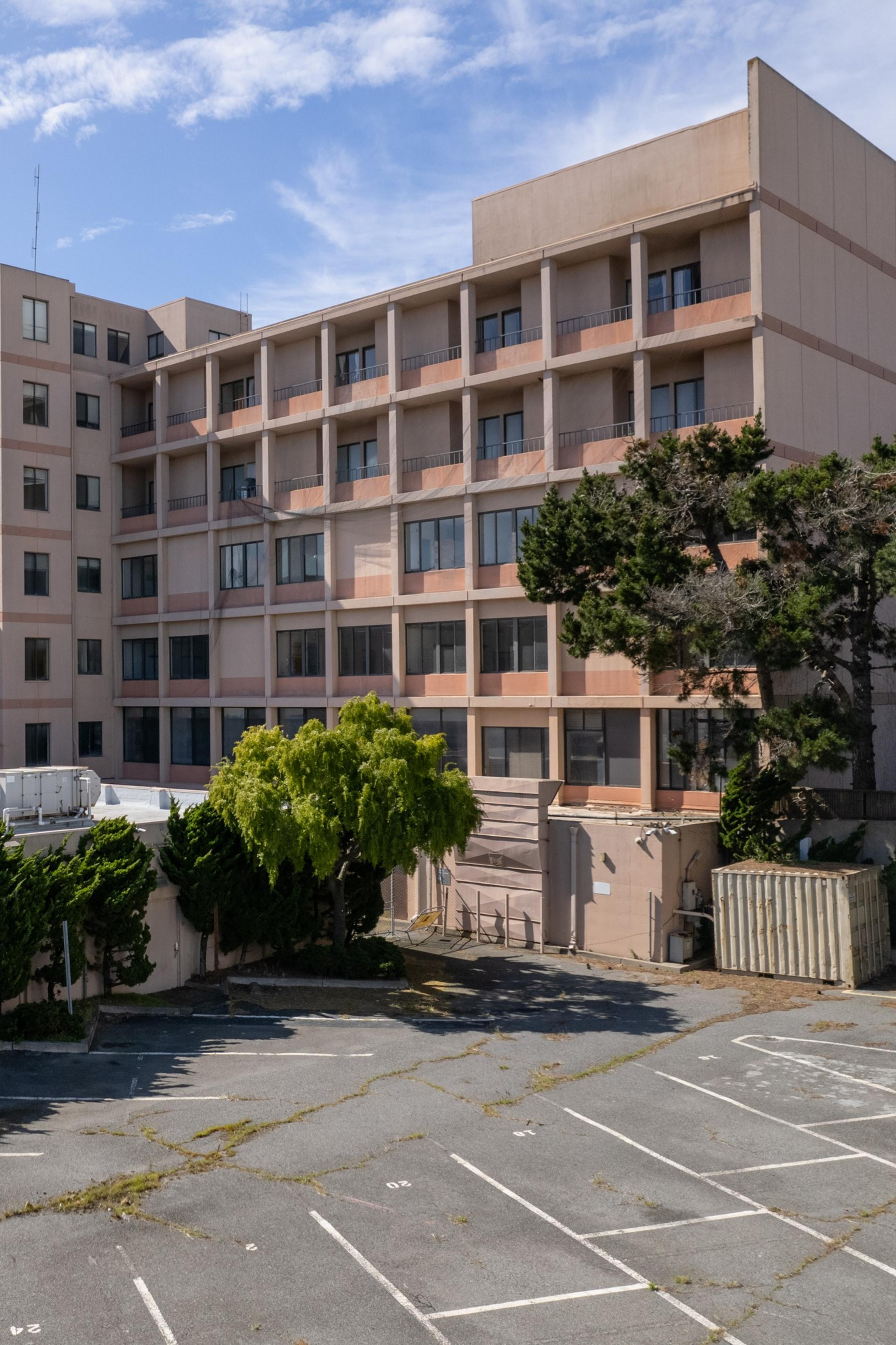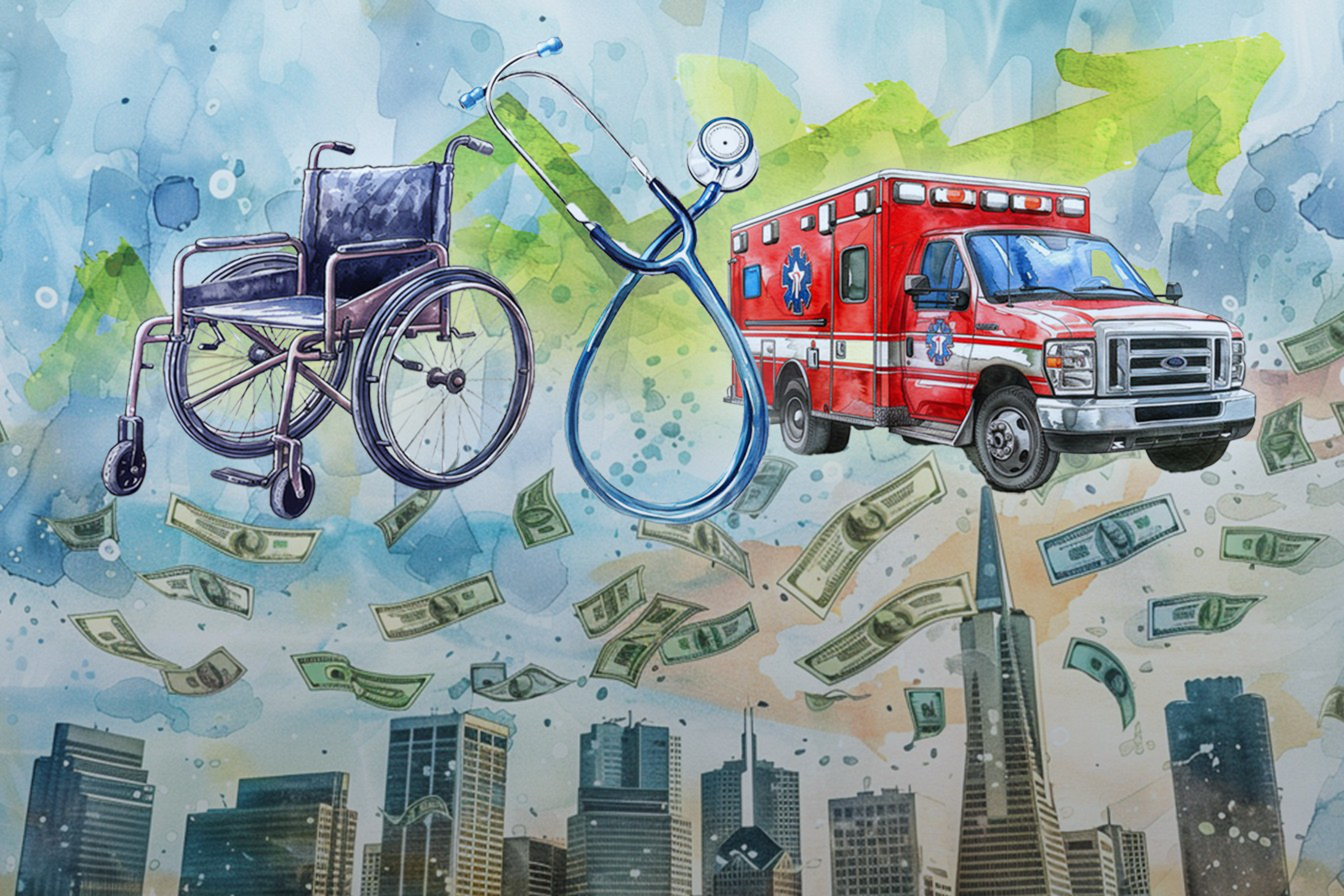In the 2010s, San Francisco’s economy was defined by the meteoric rise of tech firms, which attracted thousands of new workers, filling up office spaces and city coffers. That wave has since receded, making way for an industry that never left to shoulder the city’s economy.
Healthcare remains the brightest spot in the local job market, which has shed 9,100 jobs compared to the year prior, according to the latest data from California’s Employment Development Department.
But that number would have been far worse if not for the 7,500 healthcare jobs that San Mateo and San Francisco counties have added between April 2023 and April 2024.
The industry’s pivotal role in helping to sustain the economy is even more stark at the state level. Had it not been for the 178,700 jobs the healthcare industry added, California would have failed to log any job gains at all over the last year.

“The private sector is shrinking,” said Michael Bernick, an employment attorney with law firm Duane Morris and a former director of the state EDD. “But the demand for healthcare clearly isn’t going away.”
Staffing crisis
Despite the positive job growth, a grim truth for healthcare professionals is that the figure is inextricably tied to the industry’s record-level turnover. An NSI Nursing Solutions Inc. survey of 200 hospitals around the country (opens in new tab) found the turnover rate for registered nurses jumped from 18.7% in 2020 to 27.1% in 2021.
California has the largest number of licensed registered nurses, accounting for nearly 10% (opens in new tab) of the country’s total. Meanwhile, the number of candidates nationally who passed the nursing licensure exam have steadily increased, with 183,682 passing their license exam (opens in new tab) in 2019 and over 250,000 doing so in 2023.
“There is no nursing shortage,” said a spokesperson for National Nurses United, a union of registered nurses. “What we have is a staffing crisis, where experienced colleagues are leaving their hospital or the bedside altogether in search of a more sustainable profession after repeatedly working under conditions that are unsafe for themselves and their patients.”

This tension has played out in recent labor disputes and strikes that have hit some of the region’s largest hospital systems, including San Francisco’s public hospitals (opens in new tab), Kaiser Permanente and Stanford Medical (opens in new tab).
The new jobs added locally are primarily in ambulance services and continuing (home) care roles, which also face perennial turnover issues because of demanding working conditions in addition to low pay, experts say.
The number of emergency medical technicians and paramedic training programs offered by postsecondary education institutions has grown significantly (opens in new tab) over the past decade to meet increasing demand, according to UCSF research. That pipeline is being created almost entirely inside the state’s community college system, the study finds.
The study estimates that California has approximately 12,000 EMTs and 10,000 paramedics—most of whom are employed full-time by private companies. However, the median annual wage earned by these workers is approximately 55% lower compared to the nursing and first responder professions.
“Since the beginning of the pandemic, employers have reported increased difficulty recruiting and retaining EMTs and paramedics,” the study’s authors, Tim Bates and Janet Coffman, wrote, citing the rise of overtime work and turnover in the industry.
‘Downtown still has a long way to go’
While a large swatch of new and old office space continues to sit vacant in San Francisco, changes are afoot in the city’s aging medical care facilities.
For example, the former California Pacific Medical Center at 3700 California St. will be knocked down for housing. Meanwhile, UCSF recently broke ground on a $4.3 billion redevelopment at its Parnassus Heights campus that would create the city’s largest hospital (opens in new tab), slated to open in 2030.


Leisure and hospitality, one of the industries most negatively affected by the economy’s initial shutdown in 2020, is also adding more jobs the further removed it is from the start of the pandemic. Primarily driven by food service and performing arts, the industry has added 3,700 local jobs since last year, per EDD.
However, the industry in San Francisco writ large is still struggling. Despite a marked recovery in tourism and international travel this year, monthly hotel revenue per room night is still only 60% of what it was in 2019, according to the Office of Economic Analysis.
In the information sector, which includes tech, San Mateo and San Francisco counties have lost 11,400 jobs since last year. That sector’s downturn accounted for 80% of the region’s year-over employment decline.
According to the U.S. Bureau of Labor Statistics, California’s 5.3% unemployment rate in April is now the highest in the country. Nationally, the number was 3.9%. The San Francisco metro area’s unemployment rate is still lower, sitting currently at 3.4%.
“I think it’s welcome that we are seeing overall job growth,” said Ted Egan, the city’s chief economist. “However, the overall lack of movement in the office market shows that downtown still has a long way to go.”
